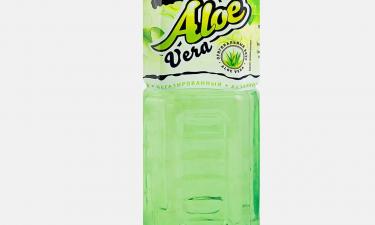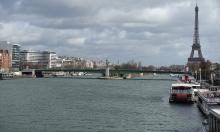Astronauts may grow and eat bugs during long space missions in future
First there was astronaut ice cream. Now insects may become the next food frontier for space cuisine. The Space Agriculture Task Force, affiliated with the Japanese space agency, is looking for ways to feed astronauts on extended missions, like on a stint to Mars. A long stay on the Red Planet would require travelers to grow their own food, but a vegetable- and grain-based diet doesn’t efficiently supply fats and amino acids.

According to research by Robert Kok, a Canadian involved in the project, bugs reproduce rapidly, so small farms could produce a steady stream of food for humans or other animals. They also efficiently convert material that is inedible to humans—mulberry leaves, wood, waste—into body mass. So bugs like silkworms, drugstore beetles, termites, or hornworms could help fill in nutritional gaps. Japanese researchers have already made cookies from silkworms, a commonly domesticated species, the Discover Magazine reports.
As Pravda.Ru previously reported Japan's space agency planed to cook up Japanese "space cuisine" for hungry astronauts at the International Space Station, but the country's best-known dish is unlikely to make the menu.
JAXA, Japan's space agency, was developing a full menu of Japanese cuisine after astronaut Soichi Noguchi slurped instant noodles in a pouch called "Space Ram" during his Discovery space shuttle mission last year.
With help from companies such as Nissin Food Products, JAXA developed space rice balls, space seaweed soup, and space green tea, said agency official Yoshinori Miyazawa. It is also experimenting with Japanese beef curry, mackerel in miso sauce, and red bean cakes.
To meet space standards, foods must have a shelf life of at least a year, be nutritionally rich, and be easy to prepare and eat in a zero-gravity environment, the AP reports.
Astronauts at the International Space Station currently eat food supplied by Russia or the United States, though "bonus meals" from other countries are sometimes served.
Imagine going camping for over a week with several of your close friends. You would make sure you have plenty of food and the gear to cook and eat it with. The food would have to be stored properly and nonperishable to avoid spoilage. After finishing your meal, or at the end of your camping trip, you would then stow all your gear and dispose of your trash properly just before the ride home.
Astronauts basically do the same thing when they go to space. Preparation varies with the food type. Some foods can be eaten in their natural form, such as brownies and fruit. Other foods require adding water, such as macaroni and cheese or spaghetti. Of course, an oven is provided in the space shuttle and the space station to heat foods to the proper temperature. There are no refrigerators in space, so space food must be stored and prepared properly to avoid spoilage, especially on longer missions.
Condiments are provided such as ketchup, mustard and mayonnaise. Salt and pepper are available but only in a liquid form. This is because astronauts can't sprinkle salt and pepper on their food in space. The salt and pepper would simply float away. There is a danger they could clog air vents, contaminate equipment or get stuck in an astronaut's eyes, mouth or nose.
Astronauts eat three meals a day - breakfast, lunch and dinner. Nutritionists ensure the food they eat provides them with a balanced supply of vitamins and minerals. Calorie requirements differ for astronauts. For instance, a small woman would require only about 1,900 calories a day, while a large man would require about 3,200 calories. There are also many types of foods an astronaut can choose from such as fruits, nuts, peanut butter, chicken, beef, seafood, candy, brownies, etc... Drinks range from coffee, tea, orange juice, fruit punches and lemonade.
As on Earth, space food comes in packages that must be disposed. Astronauts must throw their packages away in a trash compactor inside the space shuttle when they are done eating. Some packaging actually prevents food from flying away. The food packaging is designed to be flexible, easier to use, as well as maximize space when stowing or disposing food containers, reports NASA.gov.
Source: agencies
Subscribe to Pravda.Ru Telegram channel, Facebook, RSS!




